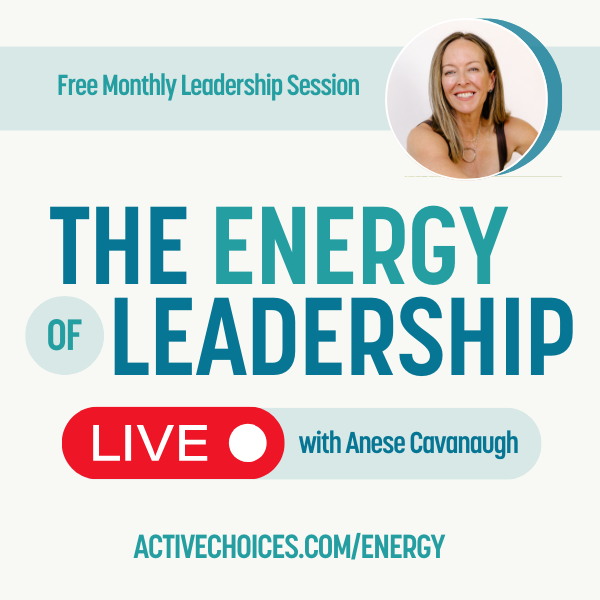I have a client who's everything you'd want in a leader.
Heart of gold. Fierce commitment to transparency. Deep desire to make people feel valued. A hunger to lead well that's almost palpable.
All admirable qualities. Essential, even. They're at the core of the kind of intentional, energetically present leadership that creates cultures where people thrive.
But like every strength, there's a shadow side. And hers? She's an external processor.
She thinks out loud. A lot. And while external processing itself isn't inherently problematic, when done unconsciously, it creates unintended impact: confused teams, deflated morale, misdirected energy, and conversations that suck the oxygen out of the room.
None of this is intentional. It's the last thing she'd want. But it happens.
And it's completely fixable.
If you're an external processor — or if you lead alongside one — this post is for you.
Why We Process Externally (And Why It Matters)
External processing always has positive intent behind it. Always. When we assume good—in ourselves and others—our relationships deepen and our communication accelerates.
So what drives external processing?
- A value of transparency – You want people to see your thinking
- A desire for connection and alignment – You're seeking resonance and input
- A need to be heard, seen, understood – Processing creates visibility
- A need to resolve fear or discomfort – Speaking it out loud helps you metabolize it
- Simple unawareness – You don't realize you're doing it or how it lands
The first step to managing external processing is awareness that you're doing it. The second step is understanding why. Awareness is 70% of the solution. Taking intentional action with that awareness is the other 30%.
Three Types of External Processing
Not all external processing is created equal. Understanding which type you're engaging in changes everything.
1. Thinking Out Loud
This is the generative kind—working through a project, system, or idea by bringing others into your thought process. It's collaborative. It's usually helpful.
Best Practice: Name that you're processing out loud. Check in with your team: Is the pace, style, and tone working for them? Are they with you?
2. "Fire, Ready, Aim" Processing
This is when you point your team in multiple directions while you work through possibilities in real time. Different tasks. Different scenarios. Multiple paths. All before you've landed on clarity.
The result? Confusion. Frustration. Wasted energy.
Best Practice: Pause. Ground. See the practices below.
3. "Doom and Gloom" Processing
This is anxiety unleashed. You're worried—maybe you don't even know what you're worried about yet—but you let it all... go. Free. Unfiltered.
It often sounds like this:
"Well... I'm not sure about this. What if this doesn't work? How do we know this won't fail? This could go really wrong. I'm not sure why this is making me feel so uncomfortable, but this is really stressing me out. But good job! Go team!"
This style does the most damage, especially when it happens at the end of a meeting or after someone's just put forward an idea they're excited about.
Best Practice: Notice. Breathe. Step back. See the intensive formula below.
What to Do: A 5-Step Process for Intentional Processing
Use these steps for "Thinking Out Loud" and "Fire, Ready, Aim" processing:
1. Notice you're doing it. What type of processing is this? Be clear on your intention.
2. Be intentional about your energy. Is it grounded and in service? Or hurried, chaotic, out of control?
3. Name the intent. Say it out loud: "I'm going to think out loud here. This is part of our creative process. We're not making decisions off this — I just want to share my thinking and get your input."
4. Pay attention to impact. Watch the room. Notice tone, pacing, body language. Don't be afraid to stop, gather yourself, and get clear.
5. Close clean and clear. Before the meeting ends, establish clear agreements: What are the outcomes? Who owns what? What are the next steps?
The name of the game is clarity and responsibility for impact.
The Intensive Formula for "Doom and Gloom" Processing
When anxiety is riding high and you're tempted to unload:
1. Catch yourself. Notice what's happening in your body. Where are you feeling anxiety, tightness, panic?
2. Step back. Breathe. Count to ten if you must. This is where self-management and awareness of impact become essential.
3. Get clear on what's really up. What's the core concern? If you can identify it and articulate it powerfully—speak to it. (Remember: Every complaint has an uncommunicated request underneath it.)
4. If you can't articulate it productively... That's okay. An ounce of self-management now is worth ten pounds of cleanup later. Step away from the processing.
5. Take a time-out. Leave the room. Process with a trusted colleague, coach, or peer. Write it out. Get clear on what's bugging you, where you're overreacting, and where you have solid concerns.
6. If you need more time... Tell your team: "This is interesting. I want to give it some thought and come back with well-formed questions and feedback. Can we continue this later?"
7. Circle back. Once you've processed and gained clarity, frame your concerns in a productive way so you and your team can address them effectively.
Things to Remember
The angst is a gift. Pay attention to it. There's a reason you're having a physical and emotional reaction. Your job as a leader is to unpack what that is, deliver it productively, and own your impact.
Assume good. In yourself and others. Look for the positive intent behind what's happening on your team, what's being said, and what the external processor is experiencing.
Partner with it. Don't resist or make it wrong. When we partner with our challenges and let them serve us—rather than drive us—external processing becomes an intentional art for effective leadership.
Your energy is contagious. Your presence sets the tone. How you process matters.
When you bring awareness, intention, and responsibility to the way you think out loud, you don't just communicate better—you lead better. And your team feels the difference.
Want to deepen your presence and leadership impact?
The IEP Method® Immersion is a 2-day intensive designed for high-performing leaders who are ready to reset, reconnect with their power, and learn how to lead with intentional energetic presence.
Learn more about the IEP Immersion
.png)





